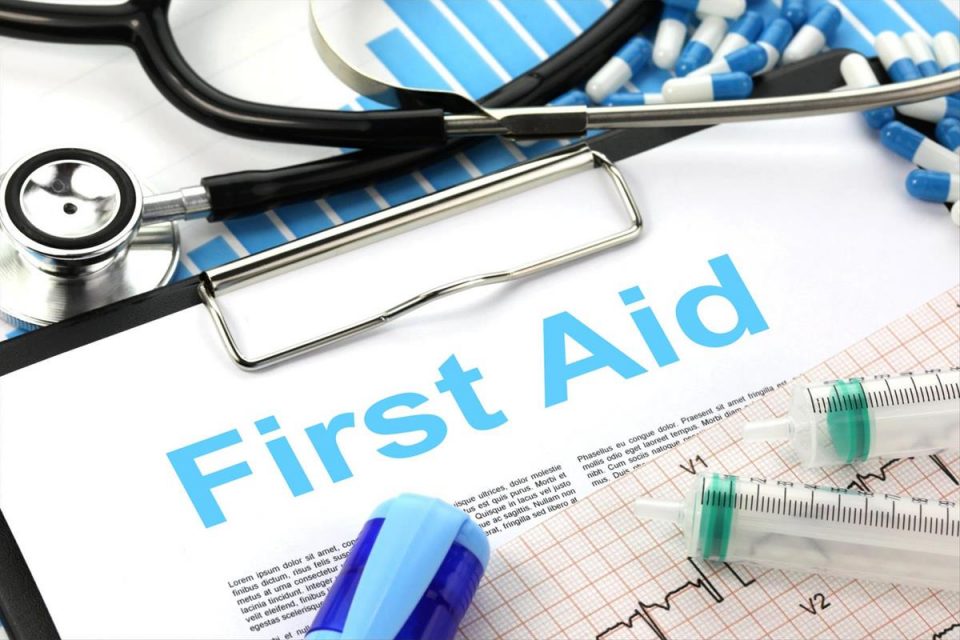You have your first aid certificate and you see someone who needs medical assistance, but you suspect they may be infected with COVID-19. Do you still help? It is a valid question, and understandably, you want to be sure you are doing the right thing not only for yourself but the casualty too. Throughout this article, we’ll explain everything you need to know about providing first aid during the pandemic.
What are the signs to look out for?
- Headache
- Fever or chills
- Cough
- Shortness of breath or laboured breathing
- Fatigue
- Body aches/sore muscles
- Nausea or vomiting
- Unable to taste or smell properly
- Sore throat
- Congestion or runny nose
- Diarrhea
When to call 000
If the person is showing any of the following signs, call 000 for assistance immediately:
- Trouble breathing/gasping
- Constant pain or pressure in the chest
- Unable to stay awake or struggling to wake up
- Confused
- Pale, grey, or blue skin tone, lips or nail beds.
Reduce the risk of danger
Minimising the risk of danger is always an integral part of providing first aid regardless of whether there is a highly infectious virus lingering or not. Your safety is paramount. Often, when helping someone with first aid, there are hazards involved and you should proceed with caution in every situation. In your first aid training, you will learn to treat every patient as if they are infected and during the pandemic, this is no exception. Remember, not all people with COVID-19 show symptoms, so it’s important to be mindful of this at all times. If the victim is alert, can follow instructions and their injury isn’t life-threatening, walk them through how to treat their ailment themselves if they are willing and able whilst remaining the recommended 1.5 metres away and waiting for emergency personnel. A lot of the time, this won’t be possible and you will need to physically help.
Carry a mask with you
The reality is, you probably have a face mask stowed at the bottom of your bag or you may already be wearing one depending on whether there are restrictions in place at the time. If you have a mask, ensure you are wearing it when offering assistance to someone who needs help. If you suspect the casualty is infected, it is recommended that they wear a mask if possible. If you have gloves, wear them. Ensure you wash your hands thoroughly after contact with the patient and avoid touching anything if possible until you can do so.
Deliver CPR without the breaths
Having to do CPR on someone who potentially has COVID-19 is probably the greatest concern for a first aider. If someone needs CPR, you can administer compressions and withhold the rescue breaths. Doing nothing could see this person deteriorate drastically and they could potentially lose their life. Both you and the casualty should have a face mask or face covering on when administering CPR compressions. If there is only one mask or covering available, it should be on the casualty. It should cover their nose and mouth. When assessing the casualty’s breathing, rather than listening over their mouth and nose and feeling their breath as you normally would, just look for signs that they are breathing only. You can do this by seeing if the chest is rising and falling. This will minimise the chances of you transmitting the virus. If you have a defibrillator on hand, you can use it as normal, just make sure it is thoroughly sanitised afterwards as a precaution.
Offering assistance to someone who lives in your home with COVID-19
If you can, it’s best to keep the infected person in their own room and away from the rest of the home temporarily while they recover. This includes bringing meals to them rather than them eating in the dining room. If you have two bathrooms, the sick person should have a bathroom to themselves while the rest of the family uses the other. This will limit the number of surfaces that they can touch and can reduce the chances of another person within the home contracting the virus. When caring for someone who has COVID-19, ensure they are well hydrated, eating wholesome food and resting. Surfaces should be continuously disinfected. Make sure you wash your hands when entering and exiting the room. Both you and the patient should be wearing a mask when in the same room together. Open windows to allow sufficient airflow.
Get tested and self-isolate
Once you have assisted someone who you think may have COVID-19, make sure you dispose of your PPE appropriately and wash your hands. Your clothes should be washed immediately after and if they can’t, you should change out of them and place them into a sealed plastic bag until you can launder them to prevent them from contaminating other items. Wash on high heat if possible. Watch vigilantly for symptoms over the next 14 days and self-isolate immediately if symptoms are experienced.
With coronavirus comes fear and uncertainty especially for those who are confronted with this potentially deadly virus. By implementing some safe practices and alterations, we can still help those who are in their time of need. Want to learn how to do first aid? Here at Paradise First Aid, we have an array of courses and would love to teach you the skills you need to potentially save a life one day.

